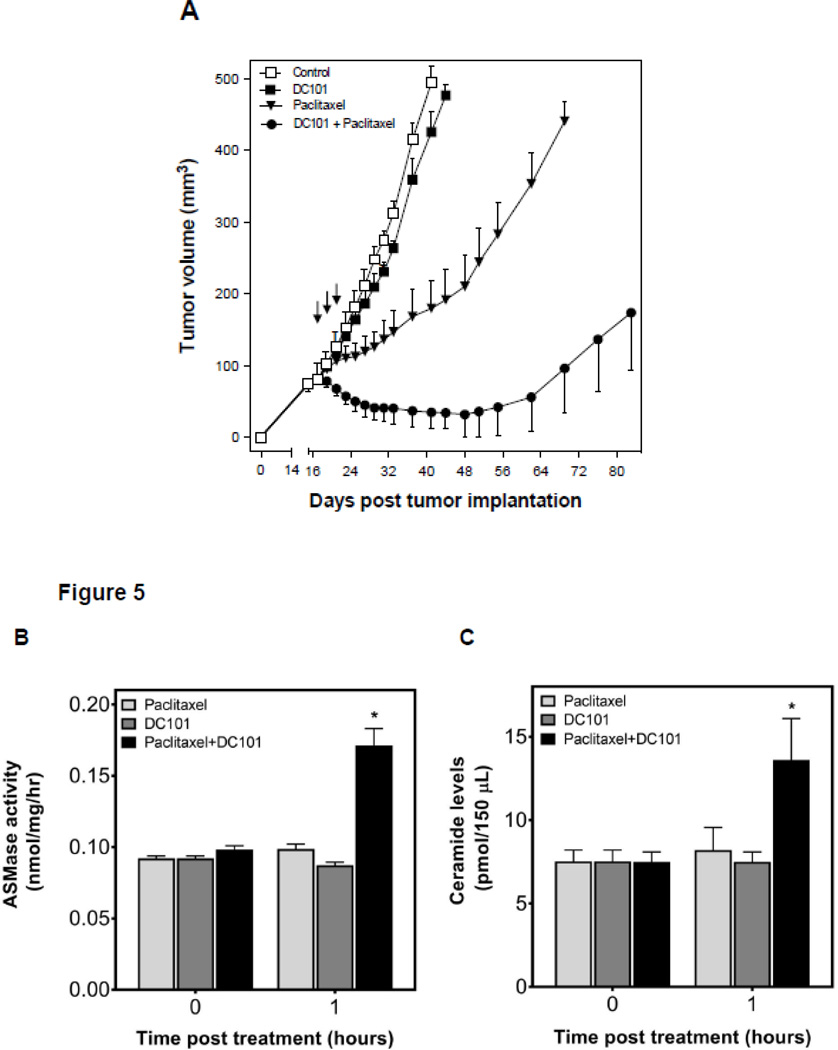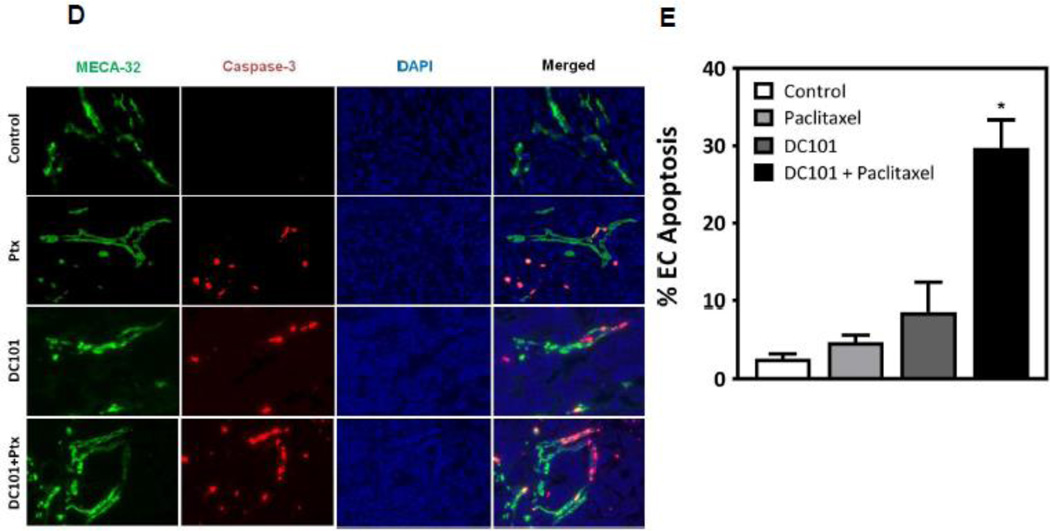Figure 5.
Anti-angiogenic therapy sensitizes HCT-116 tumors to chemotherapeutics. (A) Anti-angiogenic chemosensitization of HCT-116 tumors in SCIDasmase+/+ mice. Mice harboring tumors were treated with paclitaxel (15/15/15 mg/kg i.p) three times biweekly. DC101 (1.6 mg per mouse i.v.) was delivered 1 hour prior to each paclitaxel treatment. Data (mean±SD) are collated from 5 mice per group. (B) ASMase activity was quantified by radioenzymatic assay using [N-methyl-14C] sphingomyelin as substrate. Mouse serum was collected at 1 hour after treatment with either PBS or DC101 (2.5 mg) followed by paclitaxel (15 mg/kg). (C) In parallel, a time-course of C16-ceramide generation was measured by double mass spectrometry (MS) analysis. (D) SCIDasmase+/+ mice were treated with DC101 1 hour before one dose of 15 mg/kg paclitaxel and 4 hours post treatment, tumors were harvested and tumor endothelial cell apoptosis detected using double fluorescent staining with activated Caspase-3 and MECA-32. (E) Quantification of endothelial cell apoptosis in HCT-116 tumors after different treatments as shown in panel D. Data (mean±SD) were compiled from 20 different fields (400× magnification) at each time point from 3 tumors.


